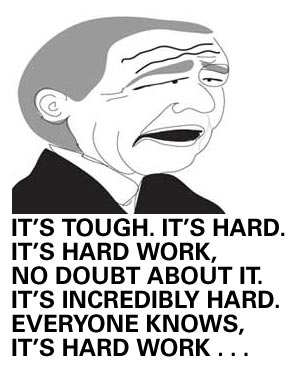
* Check the markets and trade in the direction of the prevailing market trend.
* Check the industry. Are other stocks in the same industry moving the same way?
* Are they showing signs of topping out or bottoming?
* Which stock leads the pack? Study it for clues to future price direction.
* Check industry relative strength. Make sure the industry is top ranked. See Industry Relative Strength
* Look at the weekly scale (or the next higher scale) for any threatening chart patterns.
* Is the stock trending in the same direction as on the shorter time scale?
* Do you see any existing chart patterns?
* Do you see underlying support or overhead resistance?
* Draw trendlines to see where price may intersect them.
* Score the chart pattern. See my book, Trading Classic Chart Patterns (pictured on the right) to gauge how likely the chart pattern will work. I have a taste of the scoring system here.
* Historical review. Find another chart pattern in the same stock and see how it performed in the past.
* Check your favorite indicators. What are they telling you?
* Relative strength index (RSI): I use this for divergence and as an indicator of overbought (too pricey) or oversold (too cheap).
* Bollinger bands: When the bands narrow (low volatility) that tells me price is going to make a big move. Price often bounces from one band to the other, especially when the band is horizontal and price touches it.
* Is the stock price diverging from the indicator?
* Is the indicator signaling a trade?
* Check for failure swings, little M or W shaped patterns that may signal a short-term reversal.
* Review the industry relative strength. How is this industry doing compared to others? You’ll find that industries performing well will continue to do well, usually for months.
* Is the stock trending up? Why buy a stock today when it will be cheaper tomorrow? Wait for price to turn up before buying. View the stock on the weekly scale (or higher time scale) to help decide the trend.
* Is the stock trading near the yearly high? Buy stocks showing chart patterns near the yearly high, preferably breaking out to a new high. When the breakout occurs, price coasts higher on momentum, so you can raise your stop. You do use stops, don’t you?
* Get a quote before trading. Delay buying if the quote is lower than the last time you checked.
* If the stock is up too much intraday, skip the trade. Don’t chase a stock higher.
* Look for overhead resistance. Where is price likely to stall or reverse?
* Look for underlying support. How far down is the stock likely to go?
* Place that stop with your broker.
* Will a throwback or pullback happen? Prices return to the breakout price usually in about a week. Consider initiating or adding to your position once price resumes the original breakout direction. Statistics show that chart patterns with throwbacks or pullbacks perform worse than those without throwbacks or pullback, so keep that in mind.
* Check for DCBs. Avoid any stock showing a dead-cat bounce within the last six months. Why? Because one dead-cat bounce tends to follow another.
* Prices don’t trend forever. If you are about to buy a stock that has been trending upward for several days in a row, count on price reversing just after you buy. The same goes for a consecutive declining price series. Wait for the turn then trade.
How to sell?
* Use a stop. Raise the stop as price rises. If you can’t make money in the markets, chances are you don’t use stops.
When to sell?
* The stock is about to hit your stop. Sell it now! Why wait for price to hit your stop if you know that it will?
* A bearish chart pattern has broken out downward. Sell now! If price turns around, it’s a pullback and the stock will soon head back down.
* The stock has closed below an up-sloping trendline. This is the first indication of a trend change. The longer the trendline the more reliable it is. Switch to the weekly (or higher time) scale and check the trendline again. Use the log scale for earlier exit trendline signals.
* Stock falls more than 62% retrace. Measure the retrace after an up move. A retrace larger than 62% means the stock is going down. Period. Sell it.
* Price has hit the target. If this is a short-term trade, then sell it. If not a short-term trade, then raise your stop.
* The averages are dropping. If the market is taking other stocks down along with yours, it’s time to sell. Flip to the weekly scale. If the trend is still down, then sell.
* Stocks in the industry are topping out. Any bearish chart patterns in stocks in the same industry are warning bells. Consider selling. Rare is the stock that can swim against the current for long.
* Look at the weekly scale. New chart patterns, trendlines, support and resistance all appear on the weekly chart. Use them as sell signals.
* The market is up but the stock is down. If the Dow is up 100 points but your stock is down, find out why. This intraday price divergence is a warning signal. Sometimes there is a good reason for the divergence – a hurricane approaching oil rigs for example.
* Historical price review. What happened the last time the stock made a new high, shot upward in a straight-line run, consolidated, dropped a few points in just days, or stalled at an old high? Past behavior can give you an indication of how well the stock will behave in the future. However, the more you rely on past behavior, the more likely the stock will surprise you.
* Check the indicators. Are your favorite indicators saying sell? What does the best indicator say -- price? Is price rising or falling? Is price trending up or down? Don’t know? Then switch to the weekly scale and ask if price is rising or falling. If it’s falling then sell.
* Indicators are diverging from price. This is usually a reliable sell signal, but not an automatic one. Price can diverge from indicators for months before the stock turns down, if it turns down at all.
* Indicator failure swings. These M and W shapes in the indicator can call short-term turning points accurately.
* Overhead resistance. Has the stock hit overhead resistance and is now heading down? Sell.
* Is a throwback or pullback happening? Throwbacks and pullbacks happen often after a breakout. Initiate or add to your position after a throwback once price resumes the move up. For a pullback, it’s often your last chance to exit a stock before the decline resumes. Take the sell signal and get out















